
Water & Wastewater Multiparameter (with COD) Photometer and pH meter
HI83399 is a compact, multiparameter photometer for measuring key water and wastewater quality parameters. The meter is one of the most advanced photometers available with a innovative optical design that utilizes a reference detector and focusing lens to eliminate errors from changes in the light source and from imperfections in the glass cuvette. 40 key water and wastewater quality parameters with 73 different methods covering multiple ranges are programmed into the meter. Wastewater treatment digestion parameters include COD, Total Nitrogen and Total Phosphorous which are important for monitoring nutrient removal. The HI83399 also offers an absorbance measurement mode for performance verification and for users that would like to develop their own concentration versus absorbance curves. To save valuable laboratory benchtop space, the HI83399 doubles as a professional pH meter with its digital pH/temperature electrode input. Now one meter can be used for both photometric and pH measurements.
- Advanced optical system
- Unparalleled performance from a benchtop photometer
- Digital pH electrode input
- Save valuable bench space with one meter that works both as a photometer and as a laboratory pH meter
- Water and Wastewater Treatment Digestion Parameters
- Allows measurement of COD, Total Nitrogen and Total Phosphorus
A digital pH electrode input is provided allowing the user to measure pH by a traditional glass electrode. The digital pH electrode has a built in microchip within the probe that stores all of the calibration information. Having the calibration information stored in the probe allows for hot swapping of pH electrodes without having to recalibrate. All pH measurements are automatically compensated for temperature variations with a built in thermistor located in the tip of the sensing bulb for fast and accurate temperature measurement.
Two USB ports are provided for transferring data to a flash drive or computer and to use as a power source for the meter. For added convenience and portability the meter can also operate on an internal 3.7 VDC Lithium-polymer rechargeable battery.
The HI83399 offers an absorbance measuring mode that allows for CAL Check standards to be used to validate the performance of the system. The absorbance mode allows the user to select one of the 5 wavelengths of light (420 nm, 466 nm, 525 nm, 575 nm, and 610 nm) to measure and plot their own concentration versus absorbance mode. This is useful for users with their own chemical method and for education to teach the concept of absorbance by using the Beer-Lambert Law.
Please note, reagents are not included and can be purchased here.
Features and Benefits
Digital pH Electrode Input
- Measure pH and temperature with a single probe
- Good Laboratory Practice (GLP) to track calibration information including date, time, buffers used, offset and slope for traceability
- pH CAL Check alerts user to potential problems during the calibration process
- Space saving having a pH meter and photometer built into one meter
Data Logging
- Up to 1000 photometric and pH readings can be stored by simply pressing the dedicated LOG button. Logged readings are just as easily recalled by pressing the RCL button
- Sample ID and User ID information can be added to a logged reading using alphanumeric keypad
Connectivity
- Logged readings can be quickly and easily transferred to a flash drive using the USB-A host port or to a computer using the micro USB-B port
- Data is exported as a .CSV file for use with common spreadsheet programs
Battery Status Indicator
- Indicates the amount of battery life left
Error Messages
- Photometric error messages include no cap, high zero, and standard too low
- pH calibration messages include clean electrode, check buffer and check probe
Backlit 128 x 64 Pixel Graphic LCD Display
- Backlit graphic display allows for easy viewing in low light conditions
- The 128 x 64 Pixel LCD allows for a simplified user interface with virtual keys and on-screen help to guide the user through use of the meter
Built-in Reaction Timer for Photometric Measurements
- The measurement is taken after the countdown timer expires.
- Countdown timer ensures that all readings are taken at the appropriate reaction intervals regardless of user for better consistency in measurements
Absorbance mode
- Hanna's exclusive CAL Check cuvettes for validation of light source and detector
- Allows for the user to plot concentration versus absorbance for a specific wavelength for use with user supplied chemistry or for teaching principles of photometry
Units of Measure
- Appropriate unit of measure along with chemical form is displayed along with reading
Result Conversion
- Automatically convert readings to other chemical forms with the touch of a button
Cuvette Cover
- Aids in preventing stray light from affecting measurements
On-Screen Features
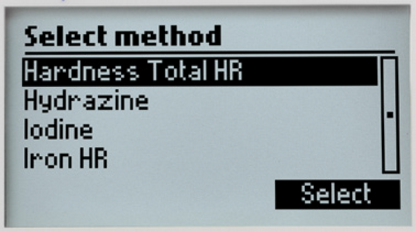 Method Selection
Users can easily select any one of the 60 measurement methods via the dedicated METHOD button.
Method Selection
Users can easily select any one of the 60 measurement methods via the dedicated METHOD button.
 Data Logging
Data Logging
Up to 1000 measurement readings can be logged with user and sample ID and recalled for future use.
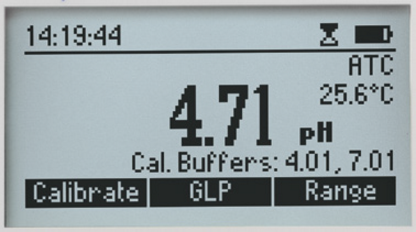 pH Measurement Mode
pH Measurement Mode
Selecting the pH measurement mode allows for the photometer to be used as a professional pH meter with many features including temperature compensated measurements, automatic two point calibration, and GLP.
Digestion Parameters Features
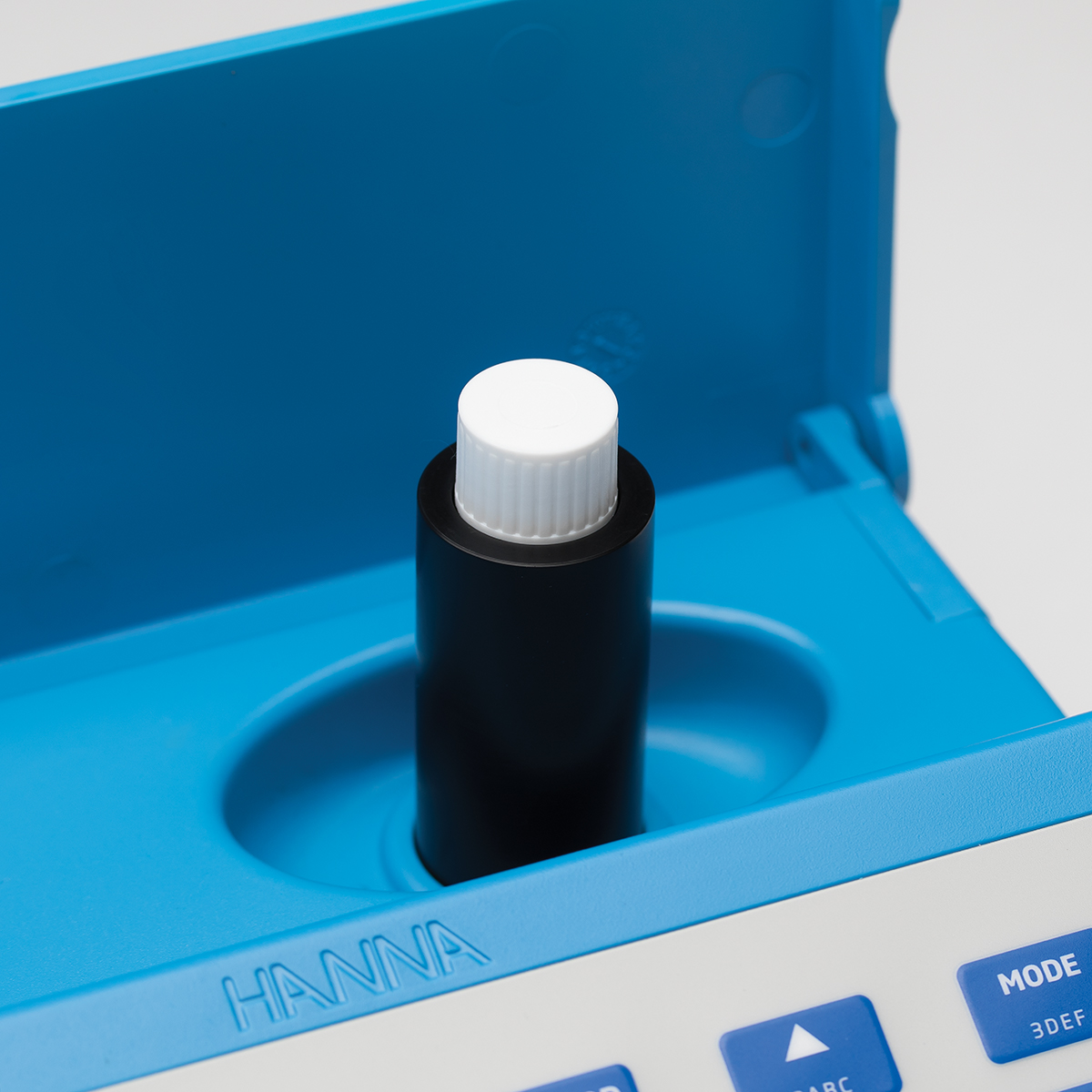 Cuvette Adapter
Cuvette Adapter
The HI83399 is supplied with a 16 mm cuvette adapter that accepts digestion vials.
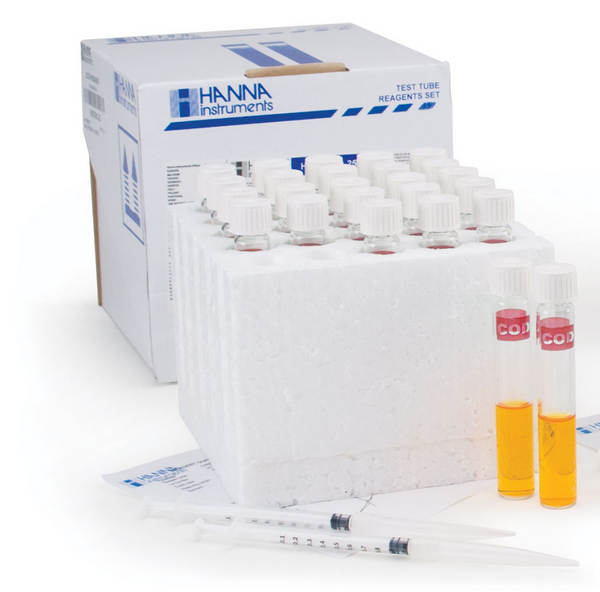 Digestion Vial Methods
Digestion Vial Methods
Compatible with COD (EPA, ISO, and mercury free methods), Nitrogen and Phosphorous reagents packaged in 16 mm digestion vial. Reagents are sold separately.
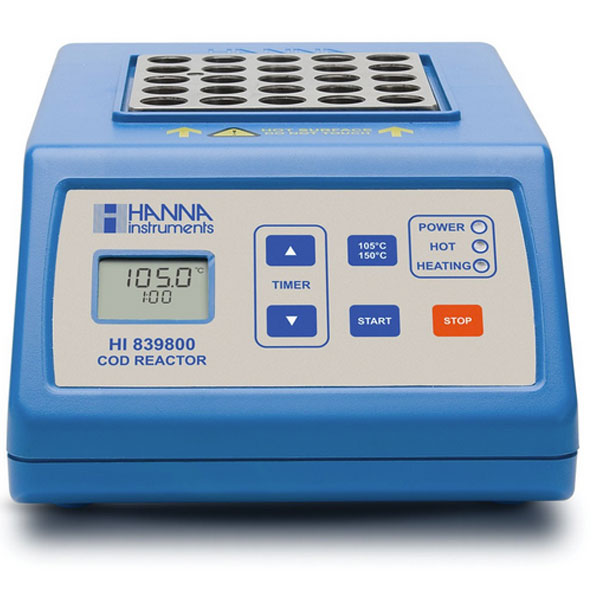 COD Reactor for Digestion Vials
COD Reactor for Digestion Vials
A COD reactor is used to heat the digestion vials. The digestion vials must be heated to a specific temperature for a period time making the HI839800 an important accessory required to have a complete wastewater treatment monitoring system.
Advanced Optical System
-
Parameters
Parameter
Range
Resolution
Accuracy (at 25 °C)
Method
Wavelength
Reagent Code
Absorbance
0.000 to 4.000 Abs
0.001 Abs
+/-0.003Abs @ 1.000 Abs
Alkalinity
0 to 500 mg/L (as CaCO3 )
1 mg/L
±5 mg/L ±5% of reading
Colorimetric Method
610 nm
Alkalinity, Marine
0 to 300 mg/L (as CaCO3 )
1 mg/L
±5 mg/L ±5% of reading
Colorimetric Method
610 nm
Aluminum
0.00 to 1.00 mg/L (as Al3+)
0.01 mg/L
±0.04 mg/L ±4% of reading
Adaptation of the aluminon method.
525 nm
Ammonia, Low Range
0.00 to 3.00 mg/L (as NH3 -N)
0.01 mg/L
±0.04 mg/L ±4% of reading
Adaptation of the ASTM Manual of Water and Environmental Technology, D1426 Nessler method.
420 nm
Ammonia, Medium Range
0.00 to10.00 mg/L (as NH3-N)
0.01 mg/L
±0.05 mg/L ±5% of reading
Adaptation of the ASTM Manual of Water and Environmental Technology, D1426, Nessler method
420 nm
Ammonia, High Range
0.0 to 100.0 mg/L (as NH3 -N)
0.1 mg/L
±0.5 mg/L ±5% of reading
Adaptation of the ASTM Manual of Water and Environmental Technology, D1426, Nessler method
420 nm
Bromine
0.00 to 8.00 mg/L (as Br2 )
0.01 mg/L
±0.08 mg/L ±3% of reading
Adaptation of the Standard Methods for the Examination of Water and Wastewater, 18th edition, DPD method
525 nm
Calcium
0 to 400 mg/L (as Ca2+)
1 mg/L
±10 mg/L ±5% of reading
Adaptation of the Oxalate method
466nm
Calcium, Marine
200 to 600 mg/L (as Ca2+)
1 mg/L
±6% of reading
Adaptation of the Zincon method
610 nm
Chemical Oxygen Demand, Low Range
0 to 150 mg/L (as O2 )
1 mg/L
±5 mg/L or ±4% of reading
Adaptation of the USEPA 410.4
420 nm
Chemical Oxygen Demand, Medium Range
0 to 1500 mg/L (as O2 )
1 mg/L
±15 mg/L or ±4% of reading
Adaptation of the USEPA 410.4
610 nm
Chemical Oxygen Demand, High Range
0 to 15000 mg/L (as O2 )
1 mg/L
±150 mg/L or ±2% of reading
Adaptation of the USEPA 410.4
610 nm
Chloride
0.0 to 20.0 mg/L (as Cl)
0.1 mg/L
±0.5 mg/L ±6% of reading
Adaptation of the mercury(II) thiocyanate method
466 nm
Chlorine Dioxide
0.00 to 2.00 mg/L (as ClO2 )
0.01 mg/L
±0.10 mg/L ±5% of reading
Adaptation of the Chlorophenol Red method
575 nm
Chlorine Dioxide, Rapid Method
0.00 to 2.00 mg/L (as ClO2 )
0.01 mg/L
±0.10 mg/L ±5% of reading
Adapted from Standard Methods for the Examination of Water and Wastewater,18 ed., 4500 ClO2 D.
525 nm
Chlorine, Free
0.00 to 5.00 mg/L (as Cl2 )
0.01 mg/L
±0.03 mg/L ±3% of reading
Adaptation of the EPA DPD method 330.5
525 nm
Chlorine, Free Ultra Low Range
0.000 to 0.500 mg/L (as Cl2 )
0.001 mg/
±0.020 mg/L ±3% of reading
Adaptation of the Standard Method 4500-Cl G
525 nm
Chlorine, Total
0.00 to 5.00 mg/L (as Cl2 )
0.01 mg/L
±0.03 mg/L ±3% of reading
Adaptation of the EPA DPD method 330.5
525 nm
Chlorine, Total Ultra Low Range
0.000 to 0.500 mg/L (as Cl2 )
0.001 mg/L
±0.020 mg/L ±3% of reading
Adaptation of the EPA recommended Method 330.5
525 nm
Chlorine, Total Ultra High Range
0 to 500 mg/L (as Cl2 )
1 mg/L
±3 mg/L ±3% of reading
Adaptation of the Standard Methods for Examination of Water and Wastewater, 20th edition, 4500-Cl
525 nm
Chromium (VI), Low Range
0 to 300 µg/L (as Cr(VI))
1 µg/L
±10 µg/L ±4% of reading
Adaptation of the ASTM Manual of Water and Environmental Technology, D1687 Diphenylcarbohydrazide method
525 nm
Chromium (VI), High Range
0 to 1000 µg/L (as Cr(VI))
1 µg/L
±5 µg/L ±4% of reading at 25 °C
Adaptation of the ASTM Manual of Water and Environmental Technology, D1687, Diphenylcarbohydrazide method
525 nm
Color of Water
0 to 500 PCU (Platinum Cobalt Units)
1 PCU
±10 PCU ±5% of reading
Adaptation of the Standard Methods for the Examination of Water and Wastewater, 18th edition, Colorimetric Platinum Cobalt method
420 nm
Copper, Low Range
0.000 to 1.500 mg/L (as Cu)
0.001 mg/L
±0.010 mg/L ±5% of reading
Adaptation of the EPA method
575 nm
Copper, High Range
0.00 to 5.00 mg/L (as Cu)
0.01 mg/L
±0.02 mg/L ±4% of reading
Adaptation of the EPA method
575 nm
Cyanuric Acid
0 to 80 mg/L (as CYA)
1 mg/L
±1 mg/L ±15% of reading
Adaptation of the turbidimetric method
525 nm
Fluoride, Low Range
0.00 to 2.00 mg/L (as F)
0.01 mg/L
±0.03 mg/L ±3% of reading
Adaptation of the Standard Methods for the Examination of Water and Wastewater, 18th edition, SPADNS method
575 nm
Fluoride, High Range
0.0 to 20.0 mg/L (as F)
0.1 mg/L
±0.5 mg/L ±3% of reading
Adaptation of the Standard Methods for the Examination of Water and Wastewater, 18th edition, SPADNS method
575 nm
Hardness, Calcium
0.00 to 2.70 mg/L (as CaCO3 )
0.01 mg/L
±0.11 mg/L ±5% of reading
Adaptation of the Standard Methods for the Examination of Water and Wastewater, 18th edition, Calmagite method
525 nm
Hardness, Magensium
0.00 to 2.00 mg/L (CaCO3 )
0.01 mg/L
±0.11 mg/L ±5% of reading
Adaptation of the Standard Methods for the Examination of Water and Wastewater, 18th edition, EDTA Colorimetric method
525 nm
Hardness, Total Low Range
0 to 250 mg/L (as CaCO3 )
1 mg/L
±5 mg/L ±4% of reading
Adaptation of the EPA recommended method 130.1
466 nm
Hardness, Total Medium Range
200 to 500 mg/L (as CaCO3 )
1 mg/L
±7 mg/L ±3% of reading
Adaptation of the EPA recommended method 130.1
466 nm
Hardness, Total High Range
400 to 750 mg/L (as CaCO3 )
1 mg/L
±10 mg/L ±2% of reading
Adaptation of the EPA recommended method 130.1
466 nm
Hydrazine
0 to 400 µg/L (as N2H4 )
1 µg/L
±4% of full scale reading
Adaptation of the ASTM Manual of Water and Environmental Technology, method D1385, p-Dimethylaminobenzaldehyde method
466 nm
Iodine
0.0 to 12.5 mg/L (as I2 )
0.1 mg/L
±0.1 mg/L ±5% of reading
Adaptation of the Standard Methods for the Examination of Water and Wastewater, 18th edition, DPD method
525 nm
Iron, Low Range
0.000 to 1.600 mg/L (as Fe)
0.001 mg/L
±0.010 mg/L ±8% of reading
Adaptation of the TPTZ Method
575 nm
Iron, High Range
0.00 to 5.00 mg/L (as Fe)
0.01 mg/L
±0.04 mg/L ±2% of reading
Adaptation of the EPA Phenanthroline method 315B, for natural and treated waters
525 nm
Iron (II) - Ferrous
0.00 to 6.00 mg/L Fe2+ )
0.01 mg/L
±0.10 mg/L ±2% of reading
Adaptation of Standard Methods for the Examination of Water and Wastewater, 3500-Fe B., Phenanthroline Method
525 nm
Iron (II & III) â Ferrous & Ferric
0.00 to 6.00 mg/L Fe
0.01 mg/L
±0.10 mg/L ±2% of reading
Adaptation of Standard Methods for the Examination of Water and Wastewater, 3500-Fe B., Phenanthroline Method
525 nm
Iron, Total (16 mm Vial)
0.00 to 7.00 mg/L (as Fe)
0.01 mg/L
±0.20 mg/L ±3% of reading
Adaptation of Standard Methods for the Examination of Water and Wastewater, 3500-Fe B., Phenanthroline Method
525 nm
Magnesium
0 to 150 mg/L (as Mg2+)
1 mg/L
±5 mg/L ±3% of reading
Adaptation of the Calmagite method
466 nm
Manganese, Low Range
0 to 300 µg/L (as Mn)
1 µg/L
±10 µg/L ±3% of reading
Adaptation of the PAN Method
575 nm
Manganese, High Range
0.0 to 20.0 mg/L (as Mn)
0.1 mg/L
±0.2 mg/L ±3% of reading
Adaptation of the Standard Methods for the Examination of Water and Wastewater, 18th edition, Periodate method
525 nm
Molybdenum
0.0 to 40.0 mg/L (as Mo6+)
0.1 mg/L
±0.3 mg/L ±5% of reading
Adaptation of the mercaptoacetic acid method
420 nm
Nickel, Low Range
0.000 to 1.000 mg/L (as Ni)
0.001 mg/L
±0.010 mg/L ±7% of reading
Adaptation of the PAN method
575 nm
Nickel, High Range
0.00 to 7.00 g/L (as Ni)
0.01 g/L
±0.07g/L ±4% of reading
Adaptation of the photometric method
575 nm
Nitrate
0.0 to 30.0 mg/L (as NO3 - N)
0.1 mg/L
±0.5 mg/L ±10% of reading
Adaptation of the cadmium reduction method
525 nm
Nitrite, Marine Ultra Low Range
0 to 200 µg/L (as N02 -N)
1 µg/L
±10 µg/L ±4% of reading
Adaptation of the EPA Diazotization method 354.1
466 nm
Nitrite, Low Range
0 to 600 µg/L (as NO2 -N)
1 µg/L
±20 µg/L ±4% of reading
Adaptation of the EPA Diazotization method 354.1
466 nm
Nitrite, High Range
0 to 150 mg/L (as NO2-)
1 mg/L
±4 mg/L ±4% of reading
Adaptation of the Ferrous Sulfate method
575 nm
Oxygen, Dissolved
0.0 to 10.0 mg/L (as O2 )
0.1 mg/L
±0.4 mg/L ±3% of reading
Adaptation of the Standard Methods for the Examination of Water and Wastewater, 18th edition, Azide modified Winkler method
420 nm
Oxygen Scavengers (Carbohydrazide)
0.00 to 1.50 mg/L (as Carbohydrazide)
0.01 mg/L
±0.02 mg/L ±3% of reading
Adaptation of the iron reduction method
575 nm
Oxygen Scavengers (Diethylhydroxylamine)(DEHA)
0 to 1000 µg/L (as DEHA)
1 µg/L
±5 µg/L ±5% of reading
Adaptation of the iron reduction method
575 nm
Oxygen Scavengers (Hydroquinone)
0.00 to 2.50 mg/L (as Hydroquinone)
0.01 mg/L
±0.04 mg/L ±3% of reading
Adaptation of the iron reduction method
575 nm
Oxygen Scavengers (Iso-ascorbic Acid)
0.00 to 4.50 mg/L (as Iso-ascorbic acid)
0.01 mg/L
±0.03 mg/L ±3 % of reading
Adaptation of the iron reduction method
575 nm
Ozone
0.00 to 2.00 mg/L (as O3 )
0.01 mg/L
±0.02 mg/L ±3% of reading
Colorimetric DPD Method
525 nm
pH
6.5 to 8.5 pH
0.1 pH
±0.1 pH
Adaptation of the Phenol Red method
525 nm
Phosphate, Marine Ultra Low Range
0 to 200 µg/L (as P)
1 µg/L
±5 µg/L ±5% of reading
Adaptation of the Standard Methods for the Examination of Water and Wastewater, 20th edition, Ascorbic Acid method
610 nm
Phosphate, Low Range
0.00 to 2.50 mg/L (as PO4 3-)
0.01 mg/L
±0.04 mg/L ±4% of reading
Adaptation of the Ascorbic Acid method
610 nm
Phosphate, High Range
0.0 to 30.0 mg/L(as PO43-)
0.1 mg/L
±1.0 mg/L ±4% of reading
Adaptation of the Standard Methods for the Examination of Water and Wastewater, 18th edition, Amino Acid method
525 nm
Phosphorous, Reactive Low Range
0.00 to 1.60 mg/L (as P)
0.01 mg/L
±0.05 mg/L or ±4% of reading
Adaptation of the EPA method 365.2 and Standard Methods for the Examination of Water and Wastewater, 20th edition, 4500-P E, ascorbic acid method.
610 nm
Phosphorous, Reactive High Range
0.0 to 32.6 mg/L (as P)
0.1 mg/L
±0.5 mg/L or ±4% of reading
Adaptation of the Standard Methods for the Examination of Water and Wastewater, 20th edition, 4500-P C, vanadomolybdophosphoric acid method.
420 nm
Phosphorous, Acid Hrdyolyzable
0.00 to 1.60 mg/L (as P)
0.01 mg/L
±0.05 mg/L or ±5% of reading
Adaptation of the EPA method 365.2 and Standard Methods for the Examination of Water and Wastewater, 20th edition, 4500-P E, ascorbic acid method.
610 nm
Phosphorous, Total Low Range
0.00 to 1.15 mg/L (as P)
0.01 mg/L
±0.05 mg/L or ±6% of reading
Adaptation of the EPA method 365.2 and Standard Methods for the Examination of Water and Wastewater, 20th edition, 4500-P E, ascorbic acid method.
610 nm
Phosphorous, Total High Range
0.0 to 32.6 mg/L (as P)
0.1 mg/L
±0.5 mg/L or ±5% of reading
Adaptation of the Standard Methods for the Examination of Water and Wastewater, 20th edition, 4500-P C, vanadomolybdophosphoric acid method.
420 nm
Potassium
0.0 to 20.0 mg/L (as K)
0.1 mg/L
±3.0 mg/L ±7% of reading
Adaptation of the Turbidimetric Tetraphenylborate method
466 nm
Silica, Low Range
0.00 to 2.00 mg/L (as SiO2 )
0.01 mg/L
±0.03 mg/L ±3% of reading
Adaptation of the ASTM Manual of Water and Environmental Technology, D859, Heteropoly Molybdenum Blue method
610 nm
Silica, High Range
0 to 200 mg/L (as SiO2 )
1 mg/L
±1 mg/L ±5% of reading
Adaptation of the USEPA Method 370.1 for drinking, surface and saline waters, domestic and industrial wastes and Standard Method 4500-SiO2
466 nm
Silver
0.000 to 1.000 mg/L (as Ag)
0.001 mg/L
±0.020 mg/L ±5% of reading
Adaptation of the PAN method
575 nm
Sulfate
0 to 150 mg/L (as SO42-)
1 mg/L
±5 mg/L ±3% of reading
Sulfate is precipitated with barium chloride crystals
466 nm
Surfactants, Anionic
0.00 to 3.50 mg/L (as SDBS)
0.01 mg/L
±0.04 mg/L ±3% of reading
Adaptation of the USEPA method 425.1 and Standard Methods for the Examination of Water and Wastewater, 20th edition, 5540C, Anionic Surfactants as MBAS
610 nm
Zinc
0.00 to 3.00 mg/L (as Zn)
0.01 mg/L
±0.03 mg/L ±3% of reading
Adaptation of the Standard Methods for the Examination of Water and Wastewater, 18th edition, Zincon method
575 nm







